- Home
- Joyce Carol Oates
On Boxing Page 8
On Boxing Read online
Page 8
Just as the boxer is trained to fight until he can’t go on, so he is trained, or is by nature equipped, to fight unconscious on his feet. The image is indelibly imprinted in my memory of the doomed South Korean lightweight Duk Koo-Kim struggling to rise from the canvas after a blow of Mancini’s burst a blood vessel in his brain—as if his body possessed its own demonic will even at the threshold of death. It is said that Joe Louis, badly stunned by Max Schmeling in their first fight, fought unconscious for several rounds—his beautifully conditioned body performing its trained motions like clockwork. (And it was during this losing bout that Louis’s prodigious talent for endurance, and therefore for great boxing, manifested itself.) So customary is this sort of “fearless” boxing that the behavior of heavyweight Jesse Ferguson in his February 1986 match with Mike Tyson—clinching, holding on to Tyson’s gloves, refusing in effect to fight—struck the eye as unnatural when of course it was utterly natural, the way the average man would behave in so desperate a situation. But boxing is contrary to nature.
One of the paradoxes of boxing is that the viewer inhabits a consciousness so very different from that of the boxer as to suggest a counter-world. “Free” will, “sanity,” “rationality”—our characteristic modes of consciousness—are irrelevant, if not detrimental, to boxing in its most extraordinary moments. Even as he disrobes himself ceremonially in the ring the great boxer must disrobe himself of both reason and instinct’s caution as he prepares to fight.
Dustin Hoffman recalls a boxing match he had seen as a boy: as the triumphant boxer left the ring to pass up the aisle, an ecstatic fight fan, male, followed closely after him, wiping all he could of the sweat from the boxer’s body onto himself.
An observer is struck by boxing’s intense preoccupation with its own history; its continuous homage to a gallery of heroes—or are they saints? At Muhammad Ali’s Deer Lake, Pennsylvania, training camp the names of heavyweight champions—Louis, Marciano, Liston, Patterson, et al.—were painted in white letters on massive iconographic boulders. “Jack Dempsey” named himself for the middleweight champion Jack Dempsey (1884-91—known as Dempsey “The Nonpareil” because he out-boxed every man he fought). “Sugar Ray” Leonard named himself boldly after “Sugar Ray” Robinson—an act of audacity that did not prove embarrassing. If Marvin Hagler shaves his head, the image of Rubin “Hurricane” Carter comes to mind, and, beyond him, that of Jack Johnson himself—the first and very likely the greatest of defiantly black boxers, whom Cassius Clay / Muhammad Ali admired as well. So frequently are a few names evoked—Dempsey, Louis, Marciano, Pep, Robinson—one might think these boxers were our contemporaries and not champions of eras long past.
If boxing exhausts most of its practitioners in a Darwinian struggle for survival like virtually no other, it so honors a very few, so enshrines them in the glamour of immortality, surely the danger is justified? As in any religion, present and past are magically one; Time, even death, are defeated. The dead immortals are always with us, not only their names and the hazy outlines of careers recalled, but individual bouts, moments when decisive punches were thrown and caught, the size of a boxer’s fist, the measurement of his reach, his age when he began and when he retired, his record of wins, losses, draws. The uppercut Jack Johnson used against Stanley Ketchel in 1909—the famous Fitzsimmons “shift” of 1897 (when Fitzsimmons defeated Gentleman Jim Corbett for the heavyweight title)—the wicked left hook with which Jack Dempsey caught a distracted Jack Sharkey in 1927—Rocky Marciano’s several right-hand knockout punches—Cassius Clay’s mystery punch in the first minute of the first round of his second match with Sonny Liston—the left hook of Joe Frazier that knocked Muhammad Ali on his back in the fifteenth round of their first fight: all are commemorated. The typical boxing writer’s imagination is not so much stimulated by his subject as enflamed. Dream matches are routinely fantasized in which boxers of different eras meet one another—Marciano-Dempsey, Louis-Ali, Hagler-Robinson, the 1961 Sonny Liston and the 1973 George Foreman. Boxers of different weights are thrown together—how would Willie Pep or Benny Leonard or Roberto Durán have done against Joe Louis, equipped with the necessary poundage? Though preoccupation with past records is common to most sports there is something unusually intense about it in boxing, perhaps because, in boxing, the individual is so very alone, or seems so. Like the saint he gives the impression of having arrived at his redemption by unflagging solitary effort.
The boxing past exists in an uncannily real and vital relationship with the present. The dead are not dead, or not merely dead. When, for instance, Larry Holmes made his ill-advised attempt to equal Rocky Marciano’s record (forty-nine wins, no losses) it seemed suddenly that Marciano was living again, his name and photograph in all the papers, interviews with his family published. Michael Spinks resurrected not only Billy Conn, the light-heavyweight champion who was defeated in a famous match by Joe Louis in 1941 (and again in 1946) but any number of other light-heavyweight champions who were defeated by heavyweight champions—Georges Carpentier, Tommy Loughran, Joey Maxim, the indefatigable Archie Moore. The spectacular first round of the Hagler-Hearns match provoked reminiscences of “the greatest first rounds of all time.” (Number one remains Dempsey-Firpo, 1923.) The Ring’s Hall of Fame—to which controversial Jake LaMotta was only recently elected—corresponds to the pantheon of saints elected by the Vatican except it is in fact more finely calibrated, its saints arranged under various groupings and subgroupings, and its balloting highly complex. (Indeed, no intellectual journal in the States is more scrupulously attentive to its history than this famous boxing magazine, founded by Nat Fleischer in 1922, in which past, present, and a hypothesized future are tirelessly examined, and in which one finds articles on such subjects as “The Greatest Disappointments in Ring History,” “The Greatest Mismatches,” “The Greatest Left Hooks,” “When a Good Little Man Did Defeat a Good Big Man.”)
It is as if by way of the most strenuous exigencies of the physical self a boxer can—sometimes—transcend the merely physical; he can, if he is lucky, be absolved of his mortality. The instinct is of course closely allied with the desire for fame and riches (those legendary champions with their purple Cadillacs!) but is not finally identical with it. If the boxing ring is an altar it is not an altar of sacrifice solely but one of consecration and redemption. Sometimes.
“…I am a sophomore at [an upstate New York SUNY campus] and when I’m at school I work out at a downtown gym 5 days a week. The gym is completely removed from the atmosphere of school in every way. Through boxing I manage to release aggression…I’ve yet to have my first amateur fight. My trainer says when I’m sparring I don’t look like I want to hurt my man. ‘You gotta want to hurt him, because he’s sure going to hurt you.’ I’m afraid my lack of bloodlust stems from a fear of going too far, physically and/or mentally. However far I push myself in the gym something in me is holding back…
“I have very little idea what it was that attracted me to boxing in the first place. No one in my immediate experience ever had the least interest in it. What started as a little fooling around at the Y soon turned into almost an obsession…Over Christmas break I had a bad experience I’d rather not repeat. The trainer gave me a break, said he’d let me train with the team for a while, and I wound up sparring the first night with a fellow who outmatched me pretty badly in experience. I took a 3-round beating, never letting him knock me down, but taking plenty of punishment, mostly jabs that landed on or around my nose, which I was sure must be broken by the end of the second round. After practice the trainer told me I had a hell of a lot of heart. Don’t blow your nose, he said, or your eyes will black, and be here tomorrow. Driving home I knew ‘heart’ meant crazy or stupid or both, but still the wave of elation I felt matched the fear and trepidation that came over me before I entered that ring…and afterwards anticipating facing my parents. I didn’t leave the house for days after that, I became depressed and embarrassed, I thought that perhaps boxing wasn’t worth it after a
ll, maybe I couldn’t cut it, and I was afraid I’d already lost whatever looks I had. My face swelled up to an unspeakably ugly apparition, and I carried two black eyes for months afterwards.
“I took an introductory course to poetry last semester and through it I became convinced that the best way to convey my reasons for and feelings about boxing would be through poetry…”
—excerpts of letters to
the author from a young boxer
If they cut my bald head open, they will find one big boxing glove. That’s all I am. I live it.
—MARVIN HAGLER
Though boxing has long been popular in many countries and under many forms of government, dictatorships no less than democracies, surely its popularity in the States since the days of John L. Sullivan has a good deal to do with what Americans honor as the spirit of the individual—his “physical” spirit—in defiance of the State. The remarkable rise of boxing in the 1920s in particular can be seen as a consequence of the diminution of the individual vis-à-vis society; the gradual attrition of personal freedom, will, and strength—“masculine,” to be sure, but not solely masculine. What more appropriate hero for the times than the pitiless ex-barroom brawler Jack Dempsey of Manassa, Colorado? Today, the “totalitarian” consciousness in the Eastern bloc of nations is clearly a function of the state while in the Western bloc it has come to seem a function of technology, if not history—inexorable fate. How to master these ever more difficult machines, how even to learn their language, when so many of us are illiterate…The individual exists in his physical supremacy, but does the individual matter?
In the magical space of the boxing ring so disturbing a question has no claim. There as in no other public arena does the individual as a unique physical being assert himself; there, for a dramatic if fleeting period of time, the great world with its moral and political complexities, its terrifying impersonality, ceases to exist. Men fighting one another with only their fists and their cunning are all contemporaries, all brothers, belonging to no historical time. The crowd, borne along with them, belongs to no historical time. “He can run but he can’t hide”—so said Joe Louis before his great fight with Conn in 1941. In the brightly lit ring, man is in extremis, performing an atavistic rite or agon for the mysterious solace of those who can participate only vicariously in such drama: the drama of life in the flesh. Boxing has become America’s tragic theater.
ON MIKE TYSON
November 22, 1986. When twenty-year-old Mike Tyson enters the packed arena of the Las Vegas Hilton Convention Center, it is through a deafening wall of noise. A neutral observer would wonder: Is this young man already a champion?—a great champion? Of the nearly nine thousand people jammed into the arena—in seats as costly as $1,000 at ringside—virtually everyone has come in expectation of seeing not merely a heavyweight title fight that promises to be unusually dramatic but boxing history itself. If Tyson takes away the World Boxing Council heavyweight title held by thirty-three-year-old Trevor Berbick, as he has promised to do, he will become the youngest heavyweight champion in the sport’s recorded history. He will fulfill the prophecy made by the late Cus D’Amato, his boxing trainer, mentor, and guardian, that he would one day break the record of another of D’Amato’s heavyweight prodigies, Floyd Patterson, who won the title shortly before his twenty-second birthday in 1956.
Mike Tyson, a boy warrior, has become legendary, in a sense, before there is a legend to define him. And never has the collective will of a crowd—the very nearly palpable wish of a crowd—been more powerfully expressed than it is tonight in Las Vegas. With his much-publicized 27-0 record as a professional boxer, of which twenty-five victories are knockouts (fifteen in the first round, several within sixty seconds), with so much expectation centered upon him as the “new hope” of heavyweight boxing, Tyson recalls the young Jack Dempsey, who fought his most spectacular fights before wining the heavyweight title. Like Dempsey in the upward trajectory of his career, Tyson suggests a savagery only symbolically contained within the brightly illuminated elevated ring, with its referee, its resident physician, its scrupulously observed rules, regulations, customs, and rituals. Like Dempsey he has the power to galvanize crowds as if awakening in them the instinct not merely for raw aggression and the mysterious will to do hurt that resides, for better or worse, in the human soul, but for suggesting the incontestable justice of such an instinct: his is not the image of the Establishment-approved Olympic Gold Medalist, like Muhammad Ali or Sugar Ray Leonard (indeed, it is said in boxing circles that Tyson was cheated of a gold medal at the 1984 Summer Olympic Games by way of the politics of amateur boxing), but the image of the outsider, the psychic outlaw, the hungry young black contender for all that white America can give. In a weight division in which hard punching is the point, Tyson has acquired a reputation for being an awesome fighter, as much admired and feared among his coevals as Sonny Liston, George Foreman, and Rocky Marciano were in their times: he has been called a “tank,” a “young bull,” a “killer,” a “block of granite”; a force primitive and irresistible as nature. As one observer noted, there is something of a comic-book quality about Tyson’s fights—the violence is so exaggerated it has a surrealist air. Opponents are propelled across the ring, fall insensible into the ropes, or, fully conscious, lose muscular control in their legs; they lie without moving for what seems a very long time. The violence may appear primitive and surrealist but it is thoughtfully administered: the result, as Tyson explains carefully in his soft, earnest, boyish voice, of punches thrown with a “bad intention in a vital area.” Cus D’Amato was, among other things, a “master of anatomy.” Tyson himself has spoken of the phenomenon of Mike Tyson in gladiatorial terms: the warrior’s vow to fight to the death if necessary precludes and makes irrelevant all merely personal motives, all conventional rationalizations for what he does. Boxing is his life, his vocation; his calling. The Roman boast of munera sine missione in the gladiatorial games—no mercy shown—would be perfectly logical to him. And so mesmerizing has the young boxer become in his scant eighteen months as a professional, his appearance in the ring tonight in Las Vegas, his mere physical presence, captivates the crowd’s attention to the degree that the entrance of reigning WBC champion Trevor Berbick goes virtually unnoticed. Even the blazoning recorded music is abruptly and mysteriously silenced.
Mike Tyson—“Kid Dynamite” as he has lately been billed—exudes an air of tension, control, fierce concentration. At five feet eleven inches, he is short for a heavyweight and strikes the eye as shorter still; his 222 ¼-pound body is so sculpted in muscle it looks foreshortened, brutally compact. (Berbick, at 218 ½ pounds, stands six feet two inches—not a large man by today’s heavyweight standards—and will have a daunting seven-inch reach advantage.) Indeed, Tyson is so muscular as to resemble a bodybuilder rather than a boxer, for whom upper-body flexibility is crucial; his neck measures an extraordinary nineteen inches—larger than any heavyweight champion’s since the circus strongman Primo Camera. His hair is trimmed savagely short, Dempsey-style, along the back and sides, as if it were done with a razor; he wears not a robe but a crude white terry-cloth pullover that looks as if he might have made it himself and, as usual, no socks—“I feel more like a warrior this way”; and though his managers Jim Jacobs and Bill Cayton will be fined $5,000 by the Nevada State Athletic Commission for the privilege, Tyson is wearing the black trunks that have become his trademark. (Trevor Berbick, who usually wears white, preempted black for his trunks—very likely because he resents the extraordinary pre-fight publicity Tyson has engendered and the humiliating fact that, though the young challenger has never met an opponent of Berbick’s stature, he is a 3-to-l favorite to win tonight.) Tyson remains the object of the crowd’s rapt attention. He is pumped up, covered in sweat, ready to fight. Though this is the hour—the very moment—to which the past six years of his life have been subordinated, he gives no sign of nerves and will say, afterward, that he was “calm” and “relaxed” in the knowledge that he could
not fail.
As he gives Tyson final instructions, his trainer, Kevin Rooney—himself a D’Amato protégé—touches foreheads with him and kisses him lightly on the cheek. (Strangers to boxing’s eerie combination of violence and childlike affection are invariably startled by such gestures, as by the abruptness with which, after the final bell, boxers often embrace each other in mutual gratitude for the fight. But such behavior, as spontaneous as it is traditional, and as natural as it is apparently contradictory, lies at the very heart of boxing.) As soon as the bell sounds, opening round one, Tyson rushes out of his corner to bring the fight to Berbick. In these quicksilver seconds, when far more happens than the eye, let alone the verbalizing consciousness, can absorb, it is clear that Tyson is the stronger of the two, the more dominant; willful. He pushes forward unmindful of Berbick’s greater age and experience; the fight is to be his fight. If boxing is as much a contest of psyches as of physical prowess, it is soon clear that Tyson, on the attack, throwing beautifully controlled punches, is the superior boxer; and he is fast—unexpectedly fast. “This kid don’t let you do what you want to do,” Berbick’s trainer Angelo Dundee will say after the fight. “He created the pressure and my guy didn’t react to the pressure…. He throws combinations I never saw before. When have you seen a guy throw a right hand to the kidney, come up the middle with an uppercut, then throw a left hook. He throws punches…like a trigger.” (This in significant contrast to Tyson’s less effective performances against José Ribalta in August 1986 and James “Quick” Tillis in May: the improvement, in so brief a period of time, is remarkable.) For those of us who have been watching preliminary bouts for the past two and a half hours, including a perfectly controlled but lackluster if not contemptuous performance by former WBC champion Pinklon Thomas, the quality of Tyson’s fighting—one might say Tyson’s being—is profound. The impact of certain of his body blows is felt in the farthest corners of the arena; the intensity of his fighting is without parallel. As an observer notes, Tyson’s punches even sound different from other boxers’ punches. In the ring, in the terrible intensity of action, Tyson is both sui generis and as stylized as the heraldic, struggling figures painted by George Bellows in such famous oils as “Stag at Sharkey’s” and “Dempsey and Firpo.” It seems suddenly possible that, as Cus D’Amato predicted, Tyson differs not merely in degree but in kind from his fellow boxers.

 Starr Bright Will Be With You Soon
Starr Bright Will Be With You Soon My Heart Laid Bare
My Heart Laid Bare A Fair Maiden
A Fair Maiden The Doll-Master and Other Tales of Terror
The Doll-Master and Other Tales of Terror Wild Nights!: Stories About the Last Days of Poe, Dickinson, Twain, James, and Hemingway
Wild Nights!: Stories About the Last Days of Poe, Dickinson, Twain, James, and Hemingway Two or Three Things I Forgot to Tell You
Two or Three Things I Forgot to Tell You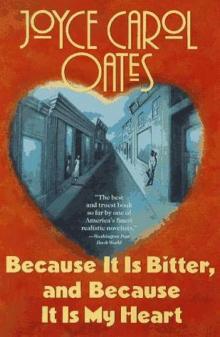 Because It Is Bitter, and Because It Is My Heart
Because It Is Bitter, and Because It Is My Heart Missing Mom: A Novel
Missing Mom: A Novel The Gravedigger's Daughter: A Novel
The Gravedigger's Daughter: A Novel American Appetites
American Appetites Black Dahlia White Rose: Stories
Black Dahlia White Rose: Stories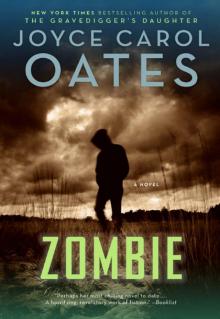 Zombie
Zombie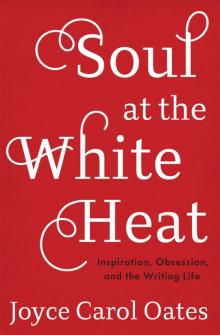 Soul at the White Heat: Inspiration, Obsession, and the Writing Life
Soul at the White Heat: Inspiration, Obsession, and the Writing Life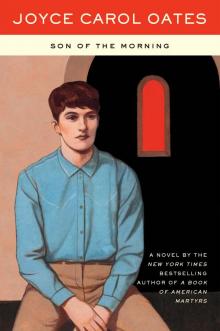 Son of the Morning
Son of the Morning Patricide
Patricide Snake Eyes
Snake Eyes Wonderland
Wonderland In Rough Country: Essays and Reviews
In Rough Country: Essays and Reviews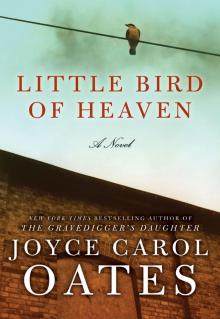 Little Bird of Heaven
Little Bird of Heaven The Haunting
The Haunting The Accursed
The Accursed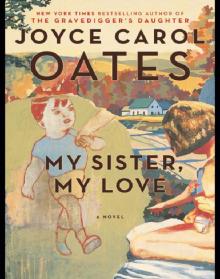 My Sister, My Love: The Intimate Story of Skyler Rampike
My Sister, My Love: The Intimate Story of Skyler Rampike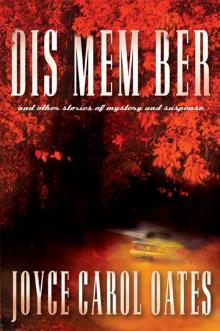 Dis Mem Ber and Other Stories of Mystery and Suspense
Dis Mem Ber and Other Stories of Mystery and Suspense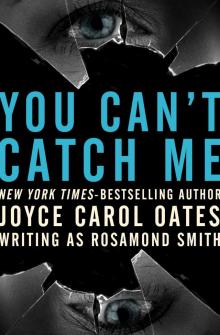 You Can't Catch Me
You Can't Catch Me Daddy Love: A Novel
Daddy Love: A Novel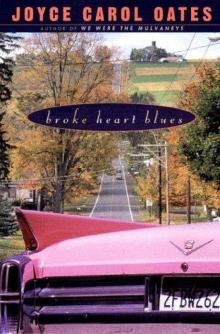 Broke Heart Blues
Broke Heart Blues I'll Take You There
I'll Take You There Mystery, Inc.
Mystery, Inc. We Were The Mulvaneys
We Were The Mulvaneys The Lost Landscape: A Writer's Coming of Age
The Lost Landscape: A Writer's Coming of Age Evil Eye: Four Novellas of Love Gone Wrong
Evil Eye: Four Novellas of Love Gone Wrong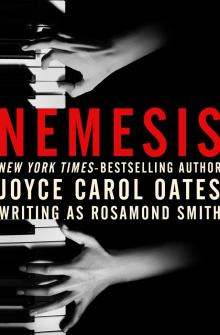 Nemesis
Nemesis Beautiful Days: Stories
Beautiful Days: Stories On Boxing
On Boxing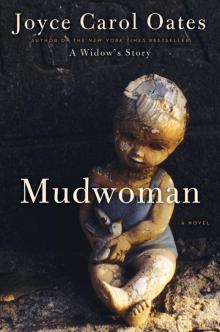 Mudwoman
Mudwoman Hazards of Time Travel
Hazards of Time Travel Night-Gaunts and Other Tales of Suspense
Night-Gaunts and Other Tales of Suspense Mysteries of Winterthurn
Mysteries of Winterthurn New Jersey Noir
New Jersey Noir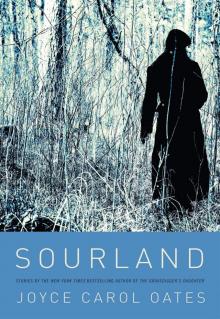 Sourland
Sourland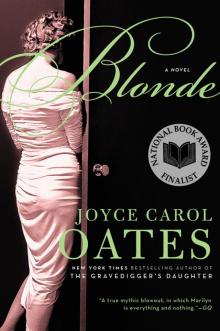 Blonde
Blonde The Corn Maiden: And Other Nightmares
The Corn Maiden: And Other Nightmares The Oxford Book of American Short Stories
The Oxford Book of American Short Stories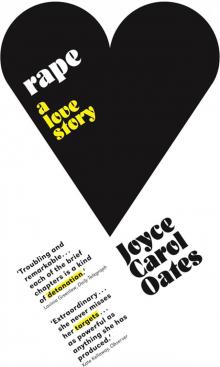 Rape: A Love Story
Rape: A Love Story Lovely, Dark, Deep: Stories
Lovely, Dark, Deep: Stories After the Wreck, I Picked Myself Up, Spread My Wings, and Flew Away
After the Wreck, I Picked Myself Up, Spread My Wings, and Flew Away Freaky Green Eyes
Freaky Green Eyes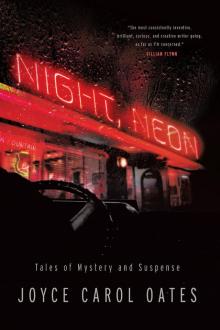 Night, Neon
Night, Neon I Am No One You Know: And Other Stories
I Am No One You Know: And Other Stories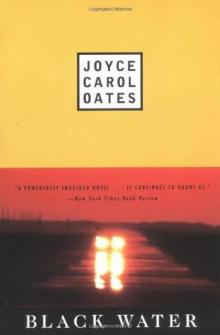 Black Water
Black Water Expensive People
Expensive People The Falls
The Falls Soul/Mate
Soul/Mate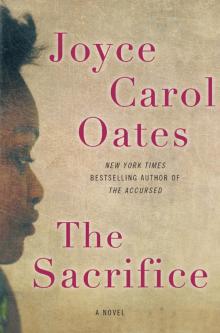 The Sacrifice
The Sacrifice The (Other) You
The (Other) You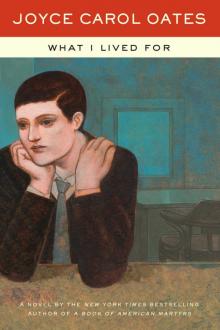 What I Lived For
What I Lived For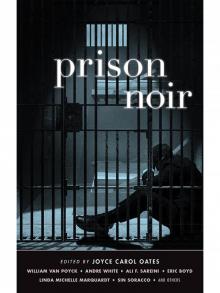 Prison Noir
Prison Noir High Crime Area: Tales of Darkness and Dread
High Crime Area: Tales of Darkness and Dread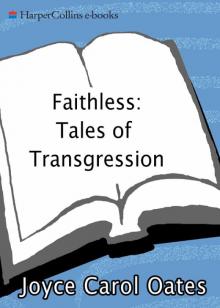 Faithless: Tales of Transgression
Faithless: Tales of Transgression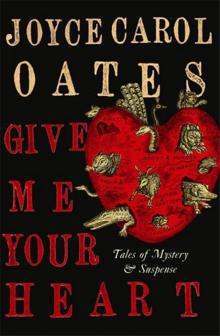 Give Me Your Heart: Tales of Mystery and Suspense
Give Me Your Heart: Tales of Mystery and Suspense The Rescuer
The Rescuer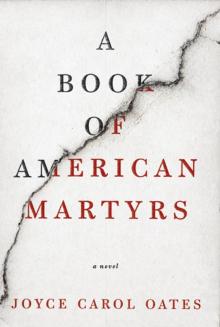 A Book of American Martyrs
A Book of American Martyrs American Melancholy
American Melancholy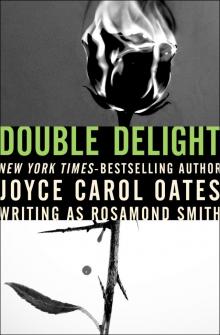 Double Delight
Double Delight Big Mouth Ugly Girl
Big Mouth Ugly Girl Bellefleur
Bellefleur Solstice
Solstice Big Mouth & Ugly Girl
Big Mouth & Ugly Girl Evil Eye
Evil Eye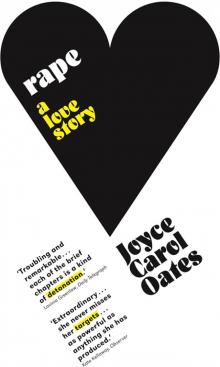 Rape
Rape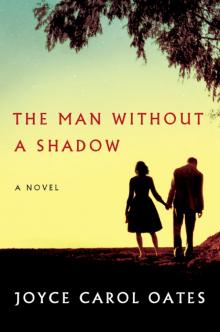 The Man Without a Shadow
The Man Without a Shadow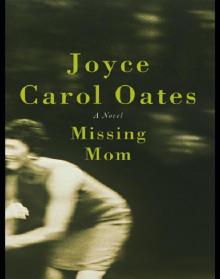 Missing Mom
Missing Mom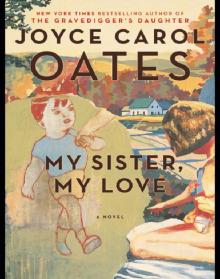 My Sister, My Love
My Sister, My Love The Gravedigger's Daughter
The Gravedigger's Daughter Beautiful Days
Beautiful Days The Lost Landscape
The Lost Landscape Daddy Love
Daddy Love Dreams from the Witch House: Female Voices of Lovecraftian Horror
Dreams from the Witch House: Female Voices of Lovecraftian Horror The Tattooed Girl
The Tattooed Girl Give Me Your Heart
Give Me Your Heart In Rough Country
In Rough Country The Journal of Joyce Carol Oates
The Journal of Joyce Carol Oates Black Dahlia & White Rose: Stories
Black Dahlia & White Rose: Stories High Crime Area
High Crime Area Lovely, Dark, Deep
Lovely, Dark, Deep A Widow's Story
A Widow's Story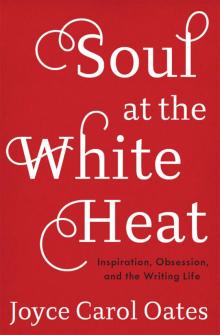 Soul at the White Heat
Soul at the White Heat Wild Nights!
Wild Nights!